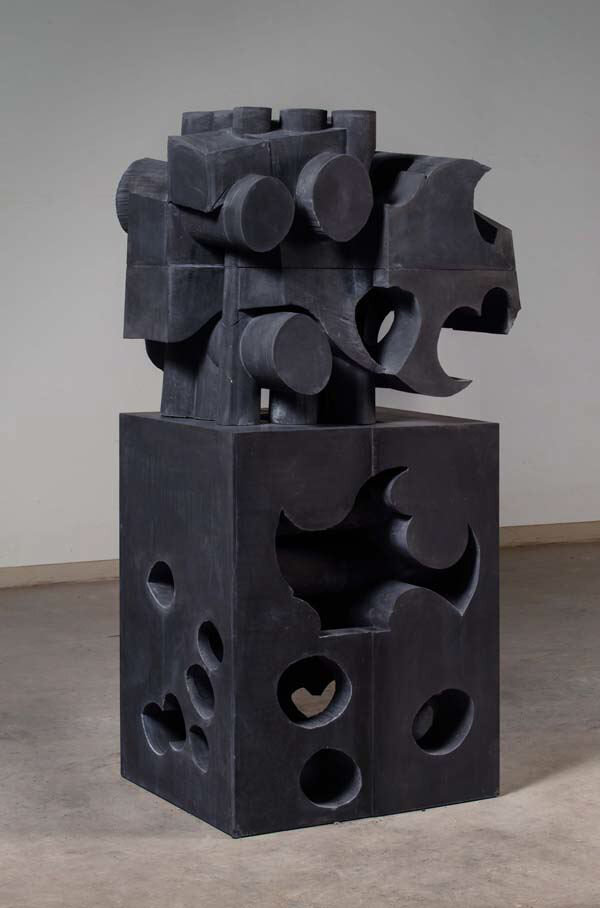Mel Kendrick, Untitled, 2007. Mahogany and Japan color. On view at the Addison Gallery of American Art.
Michelangelo wrote, “The sculpture is already complete within the marble. I just chisel away the superfluous.”
Mel Kendrick does that with trees.
“Mel Kendrick: Seeing Things in Things,” a retrospective of the New York–based artist in the Addison Gallery of American Art at Andover’s Phillips Academy, shows nearly 100 works created over five decades, most of them sculptures hewn vigorously from massive tree trunks and stumps. The exhibition remains on view through Oct. 3.
Kendrick (b. 1949) presents ideas of interior/exterior, of how form percolates from the inherent qualities of media, and how both sculpture and works-on-paper can follow a path that is evident in the original materials.
Kendrick’s work largely rejects the notion that a sculpture should present a smooth, completed finish: works are sometimes whole tree trunks excavated, emptied, or manipulated. Evidence of the process—chisel and saw marks, paint drips, support screws—complete the almost incomplete transition from natural object to artistic object.
The vast exhibition spreads across eight second-floor rooms, down a staircase and out to the expansive lawn outside the Addison Gallery. Colorful, playfully symmetrical in a lopsided way, Kendrick’s work feels immediately accessible, and grows with extended immersion.
When Kendrick sculpts, the tree remains. Sometimes he takes the interior out of the trunk, creating a positive/negative image of the original—a series he calls Core Samples. Sometimes trees are cut and stacked in almost-natural positions.
However the finished product gets achieved, the original remains in conversation. Not that all of these sculptures look like trees—arachnid shapes pose in some rooms, abstract geometric fabrications in others. A tabletop of smaller works looks like a neighborhood.
Kendrick does not work exclusively in wood. But his results in other media—concrete, cast rubber, works-on-paper—bear the same organic relationship to the original materials.
Two concrete sculptures sit outside the museum—don’t miss them on the way in. Works on paper—some using photographic process, some created in various inking experimentations—hang in some galleries, accompanying sculpture on the floor, with some sculptures also hanging on the walls.
What is not part of the sculpture becomes the sculpture as well. Kendrick fabricates his own stands, braces and supports for the work, involving those structures essentially in the final creation. Kendrick also works in “twinning”—sculpting duplicates, or making works in cast rubber that mimic wood sculptures. Shown together, these “twins” force viewers to see original works in a transformative states—one organic, one imitative.
Mel Kendrick, Double Lock, 2015. Precast concrete. Courtesy of the artist and David Nolan Gallery
When multiple works are shown together—one gallery holds more than a dozen smaller pieces—it creates a flurry of visual excitement, a sense that his tree sculptures have found their way back imaginatively to some stylized forest.
The Addison Gallery, one of the few museums at an educational institution that has re-invited the public, is open on Fridays and Saturdays, 10:00 a.m.–5:00 p.m., on Sundays 1:00–5:00 p.m.. Timed reservations are required. “Mel Kendrick: Seeing Things in Things,” remains on view through Oct. 3. addison.andover.edu or 978 749-4015.
Keith Powers covers music and the arts for Gannett New England, Leonore Overture and Opera News. Follow @PowersKeith; email to keithmichaelpowers@gmail.com.



